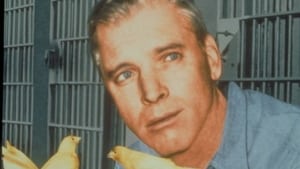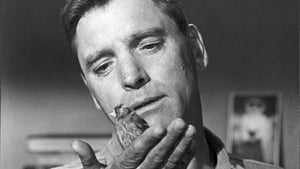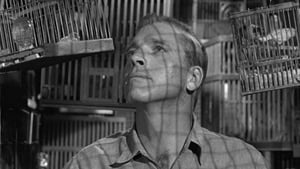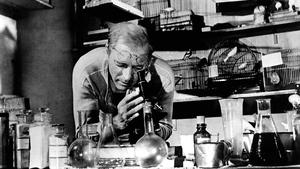Contact: [email protected]
Video Sources 0 Views
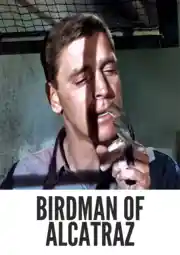
Synopsis
[ez-toc]





Introduction
In the enchanting realm of old movies, where the flickering black and white frames evoke a sense of nostalgia, one film stands out as a testament to the enduring appeal of the classics. “Birdman of Alcatraz Colorized 1962” takes us on a mesmerizing journey through the life of Robert Stroud, exploring the captivating transformation of this biographical drama through the innovative lens of colorization. This article delves into the vibrant hues that breathe new life into the celluloid of yesteryears, dissecting the significance of colorized movies and their place in the world of old films.
In an age dominated by high-definition visuals and cutting-edge special effects, the allure of old films often lies in their simplicity and the mastery of storytelling. The decision to colorize a classic like “Birdman of Alcatraz Colorized” raises intriguing questions about the intersection of tradition and modernity in the world of cinema. As we embark on this exploration, let’s unravel the threads of the film’s narrative, the creative minds behind its making, and the controversial yet fascinating process of colorization.
Read Media File Transfer Agreement: Terms and Conditions
Read FAQ
1. The Story Behind Birdman of Alcatraz Colorized
“Birdman of Alcatraz Colorized” unfolds the gripping tale of Robert Stroud, a prisoner turned ornithologist, portrayed with raw intensity by the legendary Burt Lancaster. The film, directed by John Frankenheimer, encapsulates the trials and tribulations of Stroud’s life, illustrating his evolution from a hardened criminal to a respected bird expert within the confines of Alcatraz.
The narrative weaves through Stroud’s turbulent journey, exploring themes of redemption, isolation, and the transformative power of passion. As we delve into the intricacies of his character, the film transcends the conventional boundaries of storytelling, leaving an indelible mark on the audience’s psyche. The biographical drama genre finds a poignant expression in “Birdman of Alcatraz Colorized,” offering a glimpse into the complexities of the human spirit.
Stroud’s relationship with the avian world becomes a powerful metaphor for his own journey – a flight from the cages of incarceration to the boundless skies of intellectual and emotional freedom. Through the lens of this narrative, the audience not only witnesses a historical account but also confronts universal themes of human resilience and the capacity for change.
2. The Making of a Cinematic Masterpiece
At the helm of this cinematic marvel is director John Frankenheimer, whose creative prowess brings the story to life with unparalleled finesse. Frankenheimer’s keen eye for detail and innovative storytelling techniques make “Birdman of Alcatraz Colorized” a true masterpiece of its time.
Burt Lancaster’s portrayal of Robert Stroud is nothing short of captivating. Lancaster’s ability to embody the nuances of Stroud’s character adds depth to the narrative, making the audience empathize with the protagonist’s struggles and triumphs. Telly Savalas complements this stellar performance with a compelling portrayal, contributing to the film’s overall impact.
Set against the backdrop of 1962, “Birdman of Alcatraz Colorized” reflects the socio-cultural milieu of its era. The film serves as a time capsule, transporting audiences to a period where cinematic storytelling was undergoing a metamorphosis. The collaboration of talents such as Frankenheimer, Lancaster, and Savalas culminates in a cinematic experience that transcends its temporal boundaries.
Frankenheimer’s direction, marked by a fusion of traditional storytelling and experimental techniques, elevates the film beyond a mere biographical drama. His ability to balance the emotional intensity of Stroud’s journey with the broader societal context of the 1960s speaks to the director’s acumen in crafting a narrative that resonates on multiple levels.
3. From Black and White to Color: Understanding the Art of Colorization
In a bold move that challenges the traditional perception of old films, “Birdman of Alcatraz Colorized 1962” introduces viewers to the magic of colorization. The meticulous process of adding color to the originally black and white frames brings a new dimension to the film, enhancing its visual and emotional impact.
Advanced technology has played a pivotal role in this transformation. The colorization process involves intricate digital techniques that breathe life into each frame, adding vibrancy without compromising the film’s authenticity. The decision to colorize “Birdman of Alcatraz Colorized” opens a dialogue about the intersection of cinematic tradition and technological innovation.
While purists may initially balk at the idea of tampering with the original black and white aesthetic, the colorization of old films presents a unique opportunity. It allows new generations of viewers to connect with classic movies in a way that feels contemporary and relatable. The debate surrounding colorization underscores the evolving nature of film appreciation and the ongoing quest to strike a balance between preserving history and embracing modernity.
As we delve into the intricacies of the colorization process, it becomes apparent that it’s not merely a superficial addition of hues to a monochromatic canvas. Instead, it’s a thoughtful reinterpretation of visual elements, aimed at capturing the essence of the era in a more palpable way. The color palette chosen for “Birdman of Alcatraz Colorized” is a deliberate artistic choice, reflecting the emotional tone of each scene and enriching the viewer’s experience.
4. Robert Stroud: A Prisoner’s Evolution in Color
As the protagonist of “Birdman of Alcatraz Colorized,” Robert Stroud’s journey takes center stage, and the colorization process accentuates the nuances of his transformation. The vibrant hues breathe life into Stroud’s surroundings, creating a visual tapestry that mirrors the intricacies of his emotional evolution.
Stroud’s affinity for birds becomes a symbolic journey of redemption, and the colorization enhances this aspect of the narrative. The rich palette used to portray the birds and their surroundings adds a layer of realism, allowing the audience to immerse themselves in Stroud’s world. The marriage of color and character development elevates “Birdman of Alcatraz Colorized” beyond a mere retelling of historical events; it becomes a visceral experience that transcends the boundaries of time.
The colorization of Stroud’s prison environment not only adds vibrancy to the visual storytelling but also emphasizes the stark contrast between the confined, monotonous spaces and the vibrant internal world Stroud cultivates. This stark juxtaposition serves as a visual metaphor for the resilience of the human spirit against the backdrop of adversity.
The Debate Over Colorization in Film Preservation
The introduction of colorization into the realm of old films has sparked a passionate debate within the film preservation community. Advocates argue that colorization breathes new life into classic movies, making them more accessible to contemporary audiences. Detractors, on the other hand, emphasize the importance of preserving the artistic integrity of original black and white films.
The question of whether colorization enhances or detracts from a film’s historical value remains subjective. Some argue that the process allows for a fresh perspective on familiar narratives, while others fear it erodes the authenticity of the original creation. As we navigate this discourse, alternative approaches to film preservation, such as meticulous remastering techniques, emerge as viable solutions that honor the essence of old films without compromising their visual identity.
Preserving the authenticity of classic films is undoubtedly a noble pursuit, as these works stand as cultural artifacts that encapsulate the aesthetic and technical standards of their time. However, the evolution of technology and the changing landscape of filmmaking raise fundamental questions about the adaptability of cinematic treasures to the preferences of contemporary audiences.
In defense of colorization, proponents argue that the process can act as a bridge between generations, inviting newer audiences to appreciate the timeless narratives embedded in classic films. By adding a layer of visual appeal that aligns more closely with modern cinematic expectations, colorization seeks to break down the perceived barriers that may deter younger viewers from engaging with older films.
However, the heart of the debate lies in the potential compromise of artistic integrity. Opponents fear that colorization may overshadow the director’s original vision, distorting the intended emotional impact and diluting the cultural significance of these cinematic gems. This concern reflects a broader sentiment within the film preservation community, where the sanctity of the director’s artistic intent often takes precedence.
Conclusion
In the kaleidoscopic world of “Birdman of Alcatraz Colorized 1962,” the marriage of classic storytelling and modern technology creates a cinematic experience that transcends generational boundaries. Burt Lancaster’s compelling performance, John Frankenheimer’s directorial brilliance, and the innovative use of colorization converge to form a timeless masterpiece.
As we encourage readers to embark on their journey with “Birdman of Alcatraz Colorized 1962,” we invite them to ponder the delicate balance between preserving cinematic history and embracing the advancements that propel the industry forward. In a world where old films are cherished for their timeless narratives, colorization serves as a gateway for a new audience to appreciate the richness of cinematic storytelling. Whether one embraces the hues or cherishes the monochrome, the essence of “Birdman of Alcatraz Colorized” remains a testament to the enduring magic of old films.
In concluding this exploration, it’s essential to recognize that the debate over colorization is not a binary one. It exists within the broader context of a rapidly evolving film industry, where technological advancements and changing audience preferences continually shape the landscape. The beauty of “Birdman of Alcatraz Colorized 1962” lies in its ability to spark conversations about the intersection of tradition and innovation, inviting audiences to reevaluate their perceptions of cinematic classics.
The enduring appeal of old films lies not only in their historical significance but also in their capacity to provoke thought and reflection. As we navigate the ever-expanding realm of cinema, let us embrace the diversity of perspectives that colorization brings, appreciating both the original monochrome canvas and the vibrant palette that seeks to breathe new life into classic narratives. In doing so, we contribute to a nuanced conversation that honors the past while embracing the boundless possibilities of the cinematic future.

